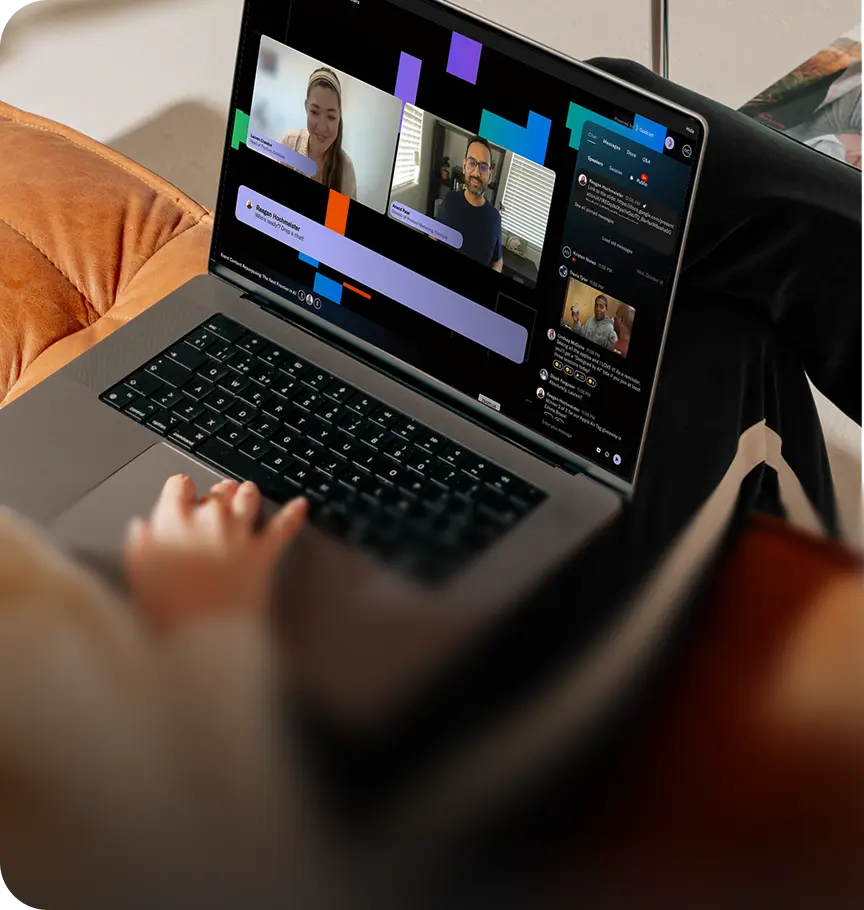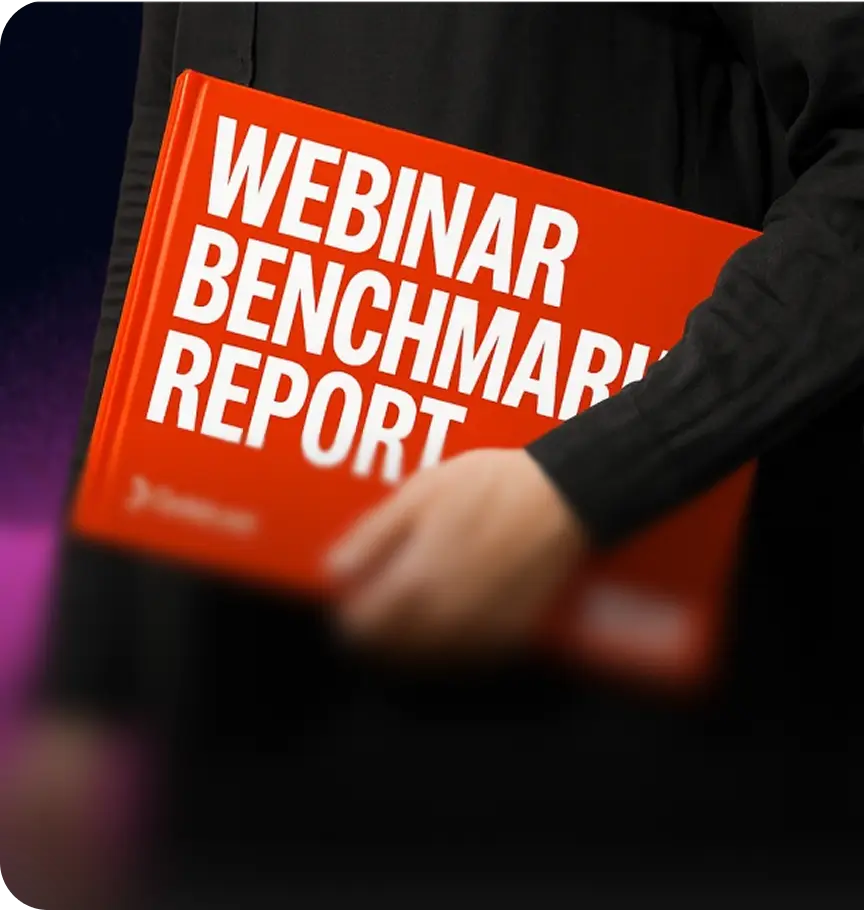What is Mindshare? How B2B Brands Can Win ICP Trust in 2025

Table of Contents
Maximize Your Marketing ROI
Join 10,000 other marketers already getting the best tips on running engaging events that boost pipeline and create raving fans.
If you suddenly lost internet access and had to quickly compile a shortlist of new vendors, which brands would be at the top?
If you’re like most of us, a few companies immediately come to mind without so much as a Google search. Maybe their social media presence is memorable. Maybe their leadership team is filled with people you feel like you know.
Either way, these brands earned their place in your mind long before you were in-market. This is mindshare marketing—and it's what separates truly successful B2B brands from the countless others fighting for attention in crowded categories.
Some customers are in-market today; for everyone else, there's mindshare
The reality is, most of your ideal customers aren't in buying mode right now. At a given moment, only about 5-10% of your total addressable market is actively looking to buy. The rest? They're either unaware of their problem or not feeling enough pain to make a change.
But here's the thing: These not-yet-ready buyers are still consuming content. They're still forming opinions about brands in your space. And they're still (often unconsciously) building mental shortlists of who they'll consider when they eventually enter the market.
The magic of B2B marketing happens long before a prospect visits your website or requests a demo. It's about planting seeds in their minds so that when they’re finally ready to act, your brand is the one they go to first.✅
What is mindshare?
Mindshare is how present your brand is in the minds of your target audience before they're actively seeking solutions. It's the culmination of every touchpoint, every piece of content, and every impression that builds recognition and trust over time.
“Buyers today don’t wait for a sales call to learn about your brand,” explains Goldcast CEO Palash Soni. “They form opinions long before you realize they’re in the market. This is why winning mindshare is becoming the foundation of modern marketing.”
Unlike brand awareness, which is simply whether people know who you are, mindshare measures how top-of-mind your brand name is within your category. And unlike demand generation, which aims to convert interest into action, mindshare focuses on creating positive associations without pushing for immediate conversion.
Maintaining consistent mindshare requires showing up regularly with valuable insights where your audience already spends time—whether that's LinkedIn, industry publications, YouTube, or Reddit.
The payoff? Brands with strong mindshare typically see:
- Higher-quality leads that close at better rates
- Less friction during sales conversations
- Less price sensitivity
- Stronger competitive positioning
- Greater customer loyalty and lifetime value
Ways to measure your brand's mindshare
Mindshare can be difficult to measure, but you can (and should) put a number to it. The key to choosing your mindshare metrics is to give them some context using your top distribution channels.
Consider these metrics across the mindshare journey:
- Awareness: Views, impressions, reach across platforms
- Interest: Subscribers, followers, newsletter signups, branded search volume
- Consideration: Content downloads, demo requests, trial signups
- Decision: Win rates, sales cycle length
Choose a few metrics that are closely tied to your top channels, and commit to tracking them consistently.
While the connection between early-stage metrics and revenue isn't always direct, tracking these numbers over time can reveal patterns about how your mindshare efforts influence business outcomes.
Examples of mindshare in action
B2B buyers make decisions in the same emotion-driven way any consumer does. Here are some examples how some of the best and brightest brands win more mindshare with their audience.
🍎 Apple: Creativity over specs
One of our favorite examples of mindshare in action? Apple's "Shot on iPhone" campaign. Rather than focusing on product specs, these videos showcase what users create with their devices. This builds desire without hard selling. When consumers need a new phone, Apple remains the aspirational choice because they've earned mindshare around creativity and quality.
🫶🏽 Taylor Swift: Community building
Even individual creators understand mindshare. Taylor Swift's brand illustrates how consistent quality, authentic storytelling, and showing up where fans are creates powerful mindshare—so powerful that when she announces a tour, millions scramble for tickets regardless of price.
⚙️ HubSpot: Mindshare through education
In the B2B world, HubSpot went from being just a marketing tool to an industry thought leader by sharing valuable educational content on its blog and through its best-in-class certification programs. By the time companies need a CRM or marketing automation solution, HubSpot has already established trust through months or years of helpful content. It’s an automatic contender on any shortlist.
Purchase decisions are complex, emotional, and made by people
Whether we’re talking B2B or B2C, purchase decisions aren't purely rational. Even complex buying decisions involving multiple stakeholders usually come down to human emotions and relationships.
To even be considered, you need to have a healthy amount of trust and recognition in the bank. Research from Inbox Insight revealed that 90% of decision-makers are more likely to engage with content from a brand they recognize and trust—and 85% are inclined to shortlist those brands.
And that shortlist? It’s everything. CMOs report that demos and sales calls typically only happen with brands already on their mental shortlist. In other words, if you haven't already earned their mindshare, you simply won’t get the chance to engage those CMOs.
If you think you’re safer within the structured buying processes of mid-market and enterprise orgs, don’t be so sure. In these settings, each stakeholder brings their own preferences and research to the table. Without pervasive mindshare across the buying committee, your solution can be easily displaced by a competitor that someone else feels strongly about.
Mindshare vs. share of heart vs. market share
Isn’t mindshare the same as share of heart? Not exactly. Mindshare relates to not just emotion, but trust specifically. Here’s how these two concepts relate to each other and to tangible market share:
- Mindshare focuses on awareness and trust. It’s being recognized as a credible player in your category without pushing for immediate action.
- Share of heart deals with emotional connection and brand affinity. It’s how people feel about your brand compared to competitors.
- Market share represents your actual business results. It’s the percentage of total category revenue your company captures.
There’s a natural progression here: Strong mindshare builds share of heart, which eventually translates to market share. The journey starts long before a prospect is ready to buy.
➡️ Here’s an example: Consider how Notion evolved from a note-taking app to a thought leader in the productivity space. The company didn’t just create software and leave it at that. It built mindshare and trust with consistent educational content that made complex productivity ideas actionable.
As people used the product and experienced productivity boosts for themselves, the brand earned share of heart, which it strategically emphasized with feelings-focused creative. Today, these efforts have earned the brand 83% market share and nearly 100,000 active users.
Hard sales pitches feel slimy—creating mindshare is less intrusive
We've all been on the receiving end of pushy sales tactics. The LinkedIn message that jumps straight to "Can I show you on a quick demo?" without establishing any relationship or value. These approaches feel invasive because they prioritize the seller's timeline over the buyer's readiness.
An approach built on earning mindshare might look more like this:
- Publishing genuinely helpful, non-promotional content that addresses industry challenges
- Building a community where prospects can learn from peers
- Creating educational video content that simplifies complex topics
- Consistently showing up in spaces where your audience already gathers
These strategies don’t pressure anyone to act before they're ready. Instead, they demonstrate expertise, build credibility, and earn the right to be considered when the time is right. And yeah, they’re way less slimy. 🐌
Building mindshare is a marathon, not a sprint
It’s not just about being non-slimy, though. As B2B categories become more crowded and buyers get more selective about who gets their attention, mindshare will separate market leaders from the forgotten rest.
Brands that invest accordingly will find themselves in consideration sets more often, face less resistance during sales cycles, and build sustainable growth that doesn't depend on constant hard selling.
Creating meaningful mindshare doesn't happen overnight. It requires patience, consistency, and a willingness to provide value without immediate return. But the long-term benefits make it worth the investment.
In the future of B2B marketing, the question isn't whether you can afford to invest in mindshare. It's whether you can afford not to.
Learn how to earn valuable mindshare by building influencer partnerships. Watch our on-demand webinar with the experts: Win B2B Mindshare Through Strategic Influencer Partnerships.
Video and Goldcast: The one-two combo that makes mindshare work
So how do you actually build mindshare in today's loud and chaotic media environment? In a word: video.
In 2025, a video-first content program is perhaps the most powerful tool in your quest to win mindshare.
Why? Video allows you to:
- Be present across multiple channels. You can use a single video (or clips from a single video) on social platforms, blog posts, emails, and your website.
- Maximize efficiency through repurposing. Rather than constantly creating new content, one high-quality video can be repurposed into multiple formats, extending your reach without draining resources.
- Stand out in saturated categories. In a sea of text-based content, video captures attention and communicates brand personality in ways written content simply can't.
At Goldcast, we’ve doubled down on the power of video content. Our platform is designed specifically to help B2B marketers create, repurpose, and distribute engaging video content that builds meaningful mindshare.
The best part? Our AI-powered Content Lab helps you build out your full content strategy without piling on hours of manual production and repurposing.
“Content Lab is a game-changer,” remarked Justin Meredith, Digital Marketing Manager at Birdeye. “It takes one hour of webinar content and transforms it into an entire multi-channel strategy with AI-generated clips, blogs, and more. Nothing goes to waste anymore.”
Want a closer look at how Goldcast can help you build mindshare with a video-first content strategy? Try Content Lab free or book a demo of our Recording Studio.
Transform Your Video Marketing with AI
Stay In Touch
Platform
Resources
© 2025 Copyright Goldcast, Inc. All rights reserved.





 Upcoming Events
Upcoming Events Event Series
Event Series On-Demand Events
On-Demand Events

